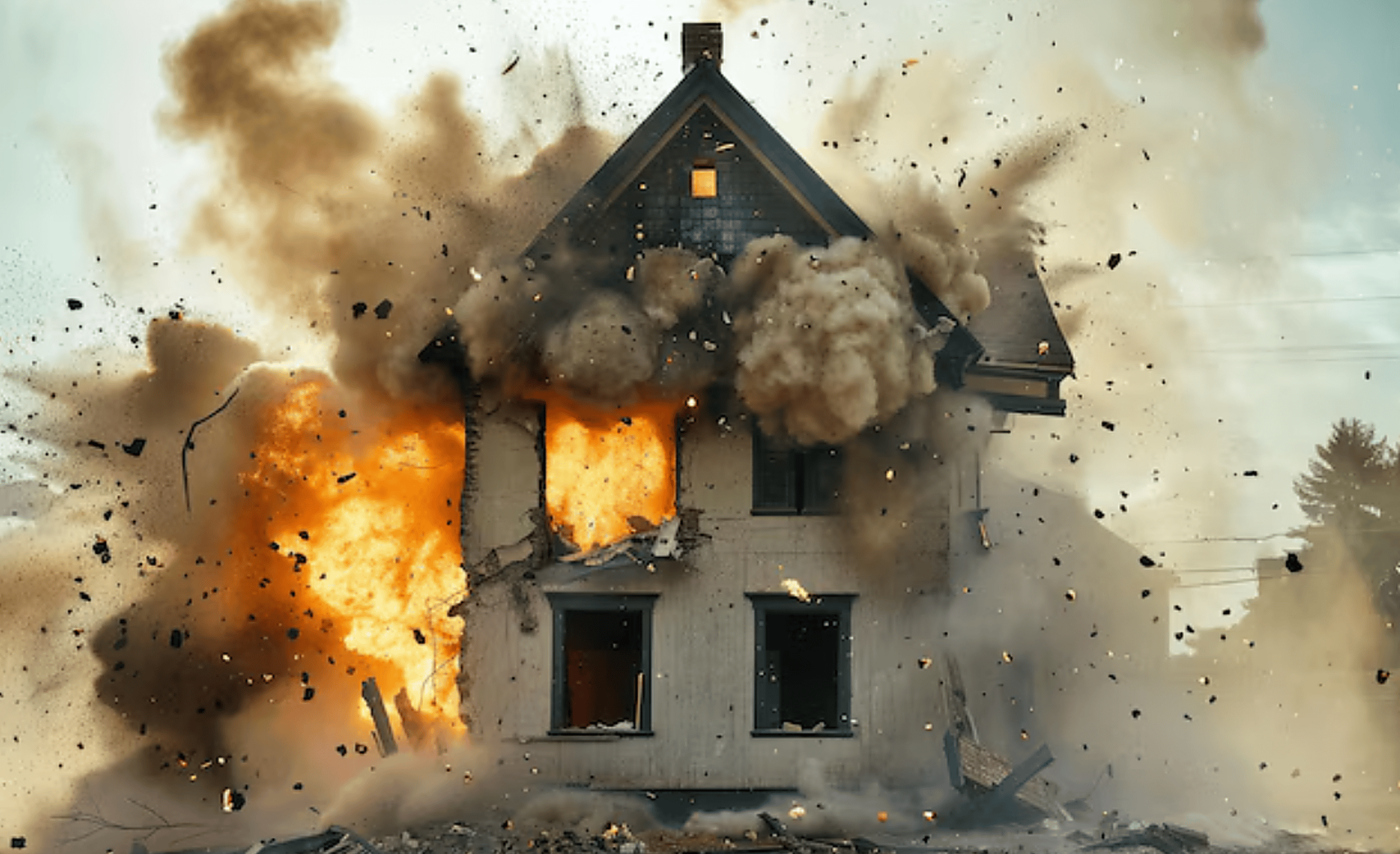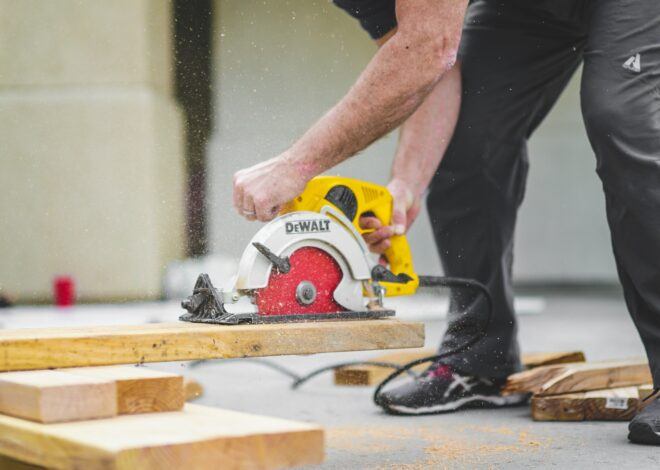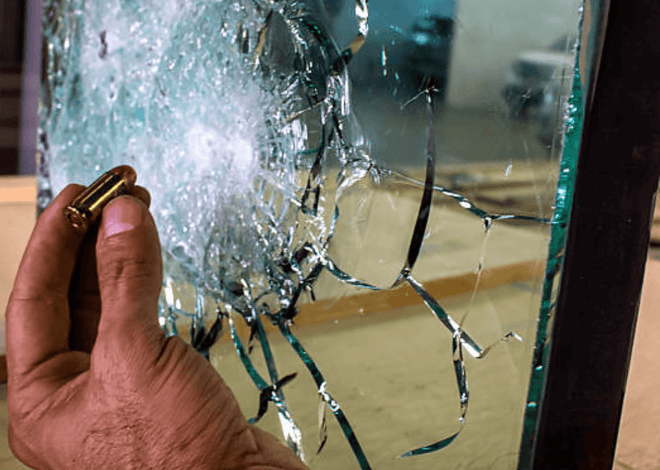
How To Blast Proof Your Home
Whether you’re looking for peace of mind or simply want to fortify your property, understanding how to blast proof your home is an essential step in safeguarding your loved ones and belongings. In today’s unpredictable world, ensuring the safety of your home has never been more crucial.
From natural disasters to man-made threats, the importance of a secure living space can’t be overstated. One effective way to enhance your home’s resilience is through blast proofing (explosion protection). But what does that really mean? How can you make your sanctuary safer against potential explosions?
Let’s dive into this critical topic and explore everything you need to know about creating a fortified haven right where you live.
Understanding the Need for Blast Proofing
Understanding the need for blast proofing starts with recognizing potential threats. In an age of increasing urbanization and unpredictable tensions, more homes are at risk than ever before. Explosions can stem from various sources, including gas leaks, terrorist attacks, or even industrial accidents nearby.
The consequences can be catastrophic—not just to property but also to lives. Beyond personal safety, there’s a growing awareness about protecting investments. Homes are not merely shelters; they’re significant financial commitments that deserve safeguarding against unforeseen events.
Blast proofing isn’t just for high-risk areas or military installations anymore. It’s becoming a prudent choice for homeowners everywhere who value security and resilience in their living environments. By taking proactive measures now, you create a buffer against chaos—transforming your home into a more secure space where life can flourish uninterrupted.
Types of Explosions and Their Effects on Homes
Explosions can vary widely in their origin and intensity. Understanding these differences is crucial for effective blast proofing. Chemical explosions, often resulting from industrial accidents or gas leaks, can generate shockwaves that shatter windows and collapse walls. The force unleashed can leave a home severely compromised.
Then there are natural gas explosions. They usually occur due to faulty appliances or infrastructure issues. These events not only cause physical damage but also pose fire hazards. Terror-related blasts are another serious concern in urban areas. Such incidents might involve explosives designed to maximize destruction, leading to catastrophic structural failures.
Vehicle-borne explosives present unique challenges as they create massive impacts on the surrounding environment. Homes near such explosions may suffer extensive damage even if they aren’t the primary target. Each type of explosion requires tailored strategies for protection and repair.
Steps to Take Before Blast Proofing Your Home
Before diving into the process of blast proofing your home, it’s essential to assess your current situation. Take a close look at any vulnerabilities in your property. Check windows, doors, and external walls for weaknesses that might compromise safety.
Next, gather information about potential threats in your area. Understanding nearby hazards can help you prioritize which areas require extra reinforcement. Consult with local authorities or building inspectors as they can provide valuable insights on regulations and best practices specific to your region.
Consider creating a detailed plan outlining the necessary upgrades needed throughout your home. This will keep the process organized and efficient. Budget appropriately for this project. Blast proofing can be an investment but having financial clarity upfront will make it easier when selecting materials and professionals later on.
Essential Materials and Tools for Blast Proofing
When embarking on the journey of blast proofing your home, selecting the right materials is crucial. Reinforced concrete should be at the top of your list. Its strength can withstand significant force. Next, consider high-strength steel for doors and windows.
This metal provides an additional layer of protection against blasts while also ensuring durability over time. Ballistic glass is another essential component. Installing it in vulnerable areas can help prevent shattering during an explosion, safeguarding both residents and property.
Don’t overlook flexible connectors. These are vital for piping systems as they minimize damage during shock waves. Additionally, a comprehensive toolkit will aid in installation. Essential tools include drills, saws, levels, and safety gear to protect yourself throughout the process.
Choosing quality materials not only enhances security but also adds value to your home long-term.
Steps to Blast Proof Your Home
Step 1: Assess Your Home’s Vulnerabilities
Before you start any blast-proofing measures, it’s essential to evaluate your home. Take a good look at the structure itself. Identify weak points where blasts could pose a threat.
Focus on windows, doors, and walls. Are there gaps that could allow pressure waves to enter? Inspect areas like basements and attics as well; they can be overlooked but are often vulnerable.
Consider the surroundings too. Is your property near potential hazards? Analyze nearby structures or vegetation that might impact safety during an explosion.
Don’t forget about security systems. Does your home have adequate alarms or surveillance? These features play a crucial role in early detection and response.
Document everything you find. A thorough assessment helps prioritize what needs attention first, setting the groundwork for effective blast-proofing strategies ahead.
Step 2: Reinforce Windows and Doors
Reinforcing your windows and doors is crucial for blast proofing your home. These entry points are often the weakest links in a structure.
Start with impact-resistant glass for windows. This type of glazing can withstand significant pressure and reduces the risk of shattering during an explosion. Consider adding window films as an extra layer of protection, which can help hold shattered glass in place.
Next, focus on securing doors. Opt for solid-core or steel doors instead of hollow ones. They provide better resistance against forceful impacts.
Don’t forget about frames and locks. Reinforce door frames with metal reinforcements to prevent them from being easily breached. Install high-quality deadbolts that resist picking and force.
Consider installing security screens on both windows and doors. These not only enhance safety but also add another barrier between your living space and potential threats.
Step 3: Strengthen Walls and Roofs
Strengthening your walls and roofs is crucial in blast-proofing your home. Start with the exterior walls; consider using reinforced concrete or steel framing. These materials can absorb and deflect shock waves more effectively than traditional wood structures.
Next, focus on insulation. High-impact resistant sheathing adds an extra layer of protection against blasts. It also helps maintain energy efficiency.
For the roof, ensure it is securely anchored to withstand potential pressure changes from explosions. Adding a secondary waterproof membrane can also provide additional safety during other adverse conditions.
Don’t overlook any openings like vents or chimneys. Secure them with metal grates to prevent debris from entering but allow for ventilation when needed.
Consult professionals specializing in blast-resistant designs for tailored solutions that suit your specific needs and environment.
Step 4: Secure Loose Items in Your Yard
Securing loose items in your yard is a crucial step in blast proofing your home. Wind and explosions can turn everyday objects into dangerous projectiles.
Start by identifying all the items that could become hazards during such events. This includes patio furniture, garden tools, and decorations. Anything not anchored down needs attention.
Next, consider storage solutions. Invest in sheds or bins to keep these items out of harm’s way. If you have larger pieces like grills or outdoor tables, secure them with heavy-duty straps or chains.
Don’t forget small plants and pots either! They might seem inconsequential but can also cause damage if tossed around. Place them inside until the threat passes.
Regularly check your yard for new additions that need securing as well. Keeping everything tidy reduces risk significantly while enhancing safety around your property.
Step 5: Create an Emergency Plan
Creating an emergency plan is crucial for ensuring safety during a blast event. Start by identifying escape routes from your home. Practice these routes with your family so everyone knows what to do.
Next, establish a designated meeting point outside. This should be a safe location away from potential hazards where you can account for everyone.
Communication is key; ensure all family members have access to mobile phones or radios. Share contact numbers and other important information in advance.
Consider preparing an emergency kit stocked with essentials like water, food, first aid supplies, and flashlights. Regularly check the contents to make sure they remain usable.
Hold regular drills that simulate various scenarios. Familiarity will help reduce panic if an actual event occurs. Being prepared transforms uncertainty into confidence when it matters most.
The Importance of Professional Installation
When it comes to blast proofing your home, professional installation is crucial. Experts have the knowledge and experience necessary to assess your specific needs effectively. They understand the complexities of different materials and how they interact with potential threats.
This expertise ensures that every measure taken provides maximum protection against explosions. Improper installation can lead to vulnerabilities. A small oversight might compromise the integrity of your defenses, leaving you at risk when it matters most.
Professionals also stay up-to-date on building codes and safety regulations. This compliance not only protects your property but adds value as well. Moreover, hiring specialists allows for tailored solutions that fit your unique living situation.
They can recommend appropriate methods based on location, architecture, and personal requirements. Investing in professional services ultimately saves time and minimizes stress throughout the process. Your peace of mind deserves nothing less than expert attention.
Maintaining Your Blast Proof Measures
Regular maintenance is key to ensuring your blast-proof measures remain effective. Inspecting your home periodically will help identify any wear and tear that could compromise safety. Check windows, doors, and walls for cracks or gaps. Even small imperfections can weaken the integrity of your protective features.
Addressing these issues early prevents larger problems later on. Additionally, keep up with routine cleaning. Dust and debris can accumulate over time, potentially hindering the performance of blast protection systems. A clean environment supports structural resilience.
It’s also wise to stay informed about advancements in blast-proof technology. New materials or techniques may enhance your current setup significantly. Consider scheduling annual assessments with professionals who specialize in blast proofing. They can provide expert insights and recommendations tailored to your specific situation while ensuring all measures function as intended.
Benefits of Blast Proofing Your Home
Blast proofing your home offers essential safety benefits. It minimizes the risk of injury from explosions, providing peace of mind for you and your family. Additionally, blast-resistant materials can significantly reduce property damage. This means fewer repairs and lower insurance premiums over time.
Another advantage is increased durability against natural disasters. These reinforced structures can withstand severe weather conditions, ensuring long-term protection. Energy efficiency often improves as well. Many blast-proofing techniques involve better insulation, which can lead to reduced heating and cooling costs.
Moreover, having a fortified home adds value to your property. In today’s market, safety features are increasingly desirable among buyers. There’s a psychological benefit that comes with knowing your home is secure against potential threats. The sense of security fosters a more relaxed living environment for everyone involved.
Additional Precautions to Consider
Beyond standard blast proofing measures, consider additional precautions to enhance your home’s safety. Reinforced windows can be a game-changer. Laminated or polycarbonate glass offers greater resistance against shattering.
Installing security systems with motion detectors and surveillance cameras adds an extra layer of protection. These devices can alert you to potential threats before they escalate. Evaluate landscaping around your property as well.
Remove any debris or flammable materials that could pose risks during an explosion. Emergency preparedness is vital too. Keep a well-stocked emergency kit that includes essential supplies like water, food, and first-aid items ready for any situation.
Engage in community planning efforts focused on disaster readiness. Collaborating with neighbors fosters collective safety within your area while sharing resources and knowledge about best practices enhances resilience against potential threats.
Conclusion: Ensuring Safety and Peace of Mind
Ensuring the safety of your home is a priority that many homeowners overlook, but blast proofing can provide significant peace of mind. Implementing these protective measures not only safeguards your property against potential explosions but also enhances the overall security and resilience of your living space.
By understanding the types of explosions and their effects, you can better appreciate why investing in blast-proofing solutions is essential. Whether it’s reinforcing windows with shatter-resistant film or installing specialized doors, each step contributes to creating a secure environment for you and your loved ones.
Employing professional installation ensures that all materials are correctly applied for maximum effectiveness. Regular maintenance checks on these modifications help ensure they remain intact over time.
Taking action now prepares you for possible future threats while fostering a sense of confidence in your home’s safety features. The benefits extend beyond protection; they encompass peace of mind knowing you’ve done everything possible to shield yourself from harm.



